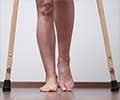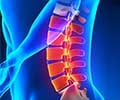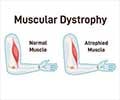Frequently Asked Questions
1. Which doctor should I consult for muscle atrophy?You should consult a family physician who will look at your medical history and perform a physical examination before recommending the appropriate diagnostic tests.
2. Is muscle atrophy reversible or irreversible?
Muscle atrophy is reversible in the case of disuse atrophy. Proper nutrition and exercise help in reversing the atrophy.
3. What is the difference between hypertrophy and atrophy of muscles?
Hypertrophy refers to the enlargement of muscles while atrophy is the reduction of muscle mass.
4. What is the effect of muscle disuse?
When muscles are not used due to various reasons, such as a sedentary lifestyle bed rest, or a cast on any part of the body, there is a reduction in the size of the muscles although the number of muscle fibers remains intact. In age-related muscle disuse, the number of muscle fibers reduces.
5. How long does it take for muscles to atrophy?
The rate of muscle loss varies based on the condition. During immobilization of a limb, there is an approximate 5% loss of muscle mass in 2 weeks.
In general, it takes several weeks to months for muscles to atrophy significantly. However, the process can be accelerated by certain factors, such as severe malnutrition or certain medical conditions
6. How does neurorehabilitation help muscle atrophy?
Neurorehabilitation can play a crucial role in helping to prevent or reduce muscle loss and improve muscle function. Neurorehabilitation can address muscle atrophy through various techniques and interventions like Electrical Stimulation and functional Electrical Stimulation (FES).Physical Therapy,Occupational Therapy, etc.
7. What is muscle hypertrophy?
Muscle hypertrophy is an increase in the size of skeletal muscle through a growth in the size of its component cells. Two factors contribute to hypertrophy: sarcoplasmic hypertrophy, which focuses more on increased muscle glycogen storage; and myofibrillar hypertrophy, which focuses more on increased myofibril size. It is the primary focus of bodybuilding-related activities.
8. Is muscle regeneration possible after muscle atrophy?
Yes, muscle regeneration is possible after muscle atrophy through proper exercise and rehabilitation.
9. What is the link between muscle wasting and atrophy?
Muscle wasting refers to a decrease in muscle mass, while atrophy specifically involves a reduction in the size of muscle cells. Both contribute to overall muscle loss.
10. How does electrotherapy help in muscle atrophy?
Electrotherapy aids in muscle atrophy by stimulating muscle contractions, promoting blood flow, and preventing further deterioration through targeted electrical impulses.
11. What is the code for Muscle Atrophy icd10?
The ICD-10 code for muscle atrophy is M62.81. This code is used to identify muscle atrophy in medical records and for statistical purposes.











